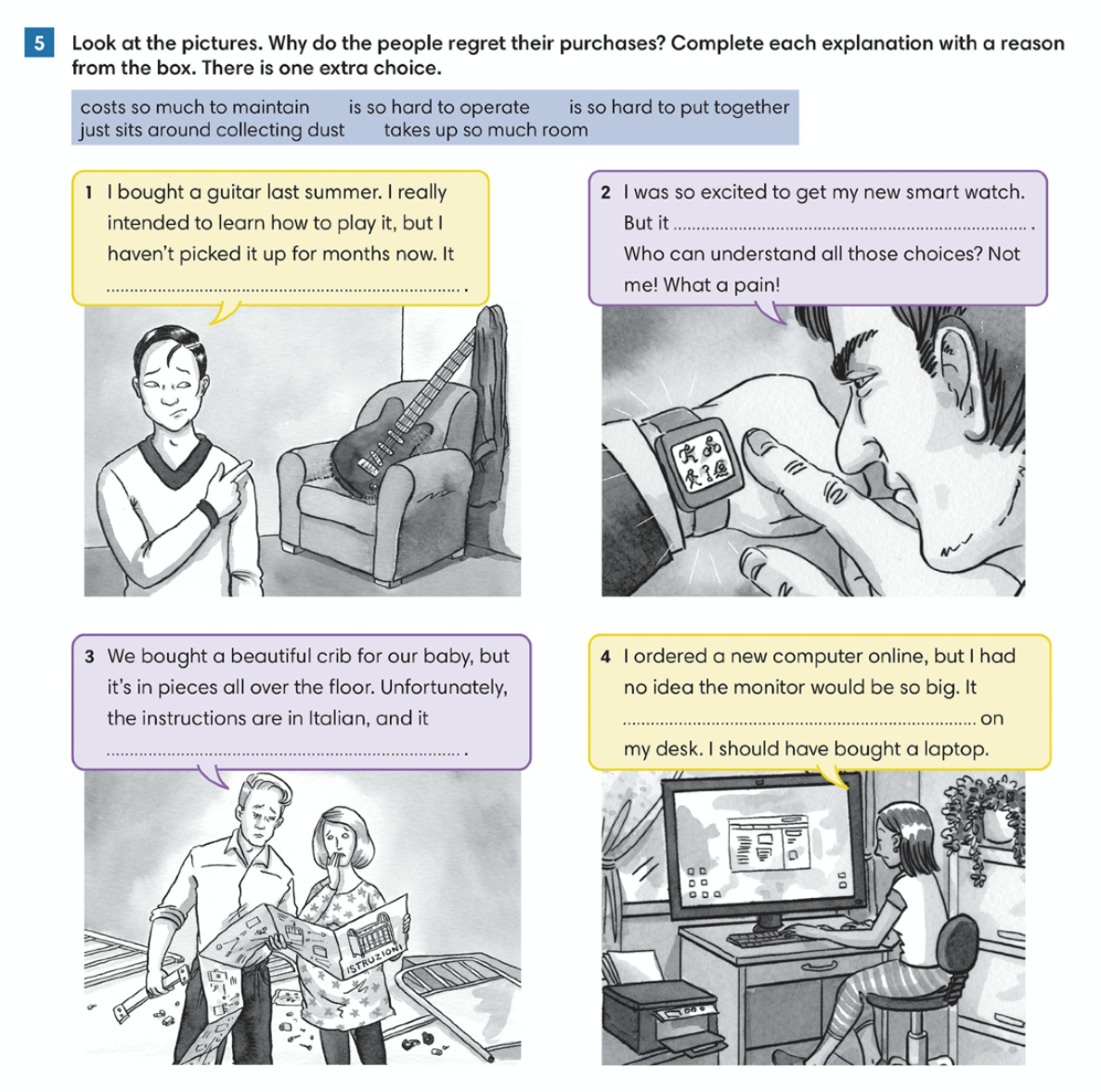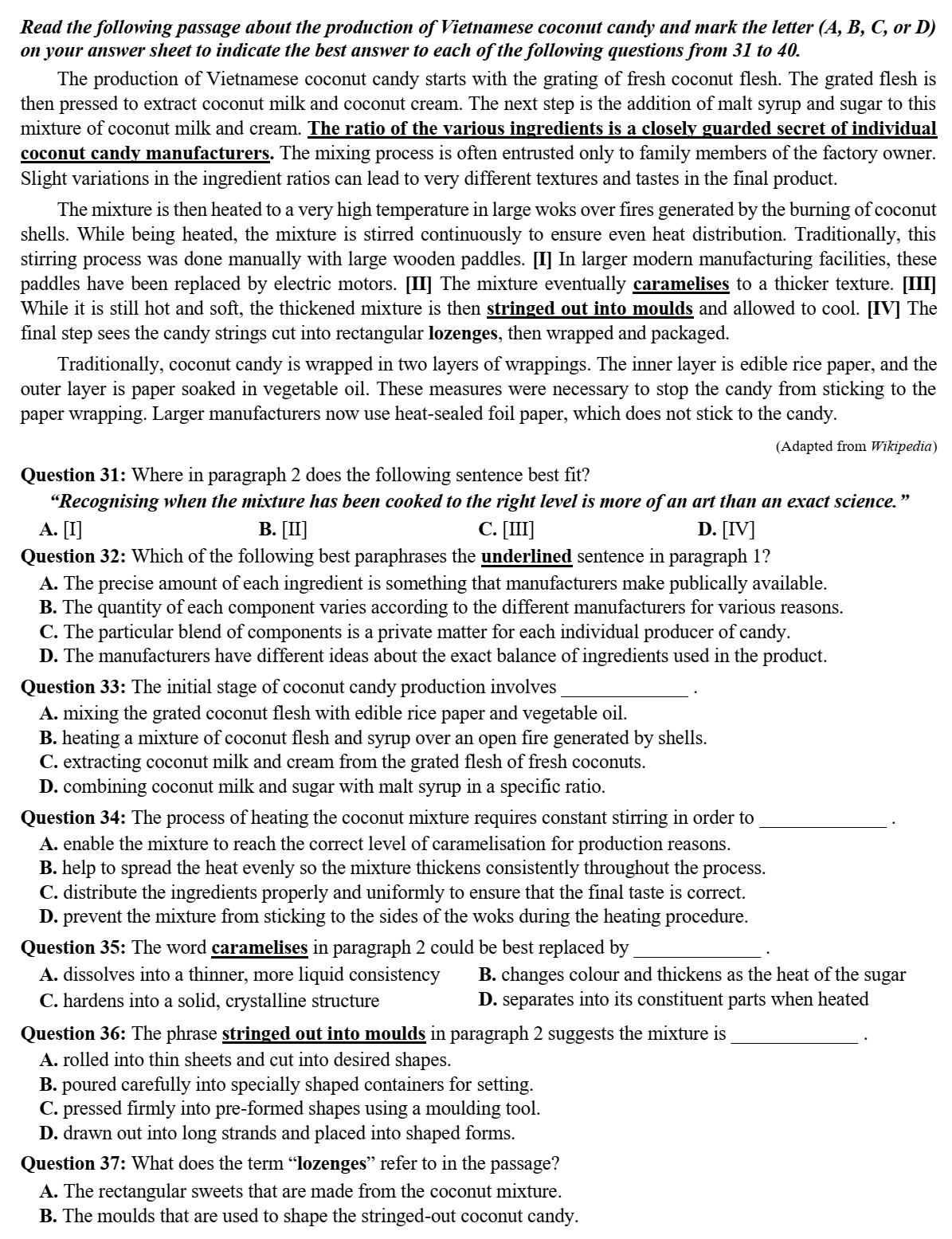Read the following passage about the role of colour in food and mark the letter (A, B, C, or D) on your answer sheet to indicate the best answer to each of the following questions from 23 to 30.
Colour has always been important when it comes to food. The Roman food lover Apicius observed that ‘we eat first with our eyes’ and ancient Egyptians used to colour sweets using grape juice to make them more attractive. As food manufacturing grew in the 19th century, all kinds of substances were used to colour and disguise cheap products. Some of these colourings were actually poisonous and there were incidents where people died. Finally, laws had to be introduced to protect the public and the producers of more expensive, natural products. In some parts of the US, manufacturers were banned for many years from using yellow dye to make margarine look more like butter. However, these laws have not stopped food businesses from using colour to their advantage. These days, there’s a huge variety of colours available, but they’re mainly produced from natural sources. Furthermore, the food industry has a greater understanding of how colour can affect our mood.
For example, red and yellow are popular with fast-food chains partly because of their effect on behaviour. Red tends to make us more active and increase our appetite. Bright yellow may also encourage us to eat more by creating a happy mood. At the same time, it seems people tend not to stay long in yellow rooms, leaving space for new customers.
We may also find ourselves eating more or less depending on the colour of the plate we use. Studies suggest that when the colour of the plate contrasts strongly with the food (white pasta on a blue plate) we tend to serve ourselves less. When the food matches the colour of the plate more closely people may eat more – although that might not be the case for all colours. For example, the colour blue is often associated with food that has gone off. One experiment was reported to show how colouring a steak blue made people feel sick, even though the food was perfectly fresh. People started eating the meal under a low light, which meant they could not see that the food had been dyed. When the lights were turned up and they saw their off-coloured food, several of them immediately left the table saying they felt ill.
(Adapted from Outcomes 3ed Intermediate)
Question 23: What does the writer suggest about food colouring in the 19th century?
A. It was sometimes used to hide low-quality food products.
B. People were unaware of the risks of eating coloured food.
C. It helped make the food industry more attractive to buyers.
D. Laws were introduced to encourage the use of natural dyes.
Question 24: Why were yellow dyes banned in margarine production in parts of the US?
A. Food manufacturers used yellow dye to mislead customers.
B. Yellow dyes were considered unsafe for public consumption.
C. The public preferred margarine which looked more like butter.
D. The government wanted to protect butter producers’ interests.
Question 25: What is one reason fast-food chains use red and yellow in their designs?
A. These colours are associated with a sense of happiness and joy.
B. Red and yellow encourage people to eat quickly and leave faster.
C. They can increase appetite and create a welcoming environment.
D. The colours are widely recognised as symbols of fast-food culture.
Question 26: The phrase “contrast strongly” in paragraph 3 refers to ______________ .
A. how the food colour and plate colour differ noticeably
B. food and plates that do not match in size and texture
C. the way food colour changes under different lighting
D. plates with colours that make food appear more appealing
Question 27: What does the writer imply about blue-coloured food?
A. People tend to associate it with food that is no longer fresh.
B. It can make food look unappetizing and reduce overall appetite.
C. Experiments show that blue food can make people feel unwell.
D. Blue food is generally avoided unless served under dim lighting.
Question 28: What happened when people ate blue steak under low lighting?
A. They were unable to tell that the food had been artificially dyed.
B. They felt unwell once they realised the steak had been coloured.
C. They only ate the food because the lighting concealed the colour.
D. They continued to eat the steak but said it tasted very unpleasant.
Question 29: Which of the following can be inferred from the passage?
A. Natural food dyes are always safer than artificial alternatives.
B. The colour of food is more important than its taste or freshness.
C. Food manufacturers use colour to influence consumer behaviour.
D. Brightly coloured food is more likely to appeal to younger people.
Question 30: Which of the following best summarises the passage? A. The food industry uses colour to make products more appealing and influence mood. B. The impact of colour on food is both psychological and practical, affecting behaviour. C. Colour has historically been used to enhance food, but it can also create health risks. D. Colour plays a key role in food marketing, but it is also a safety concern forconsumers.






